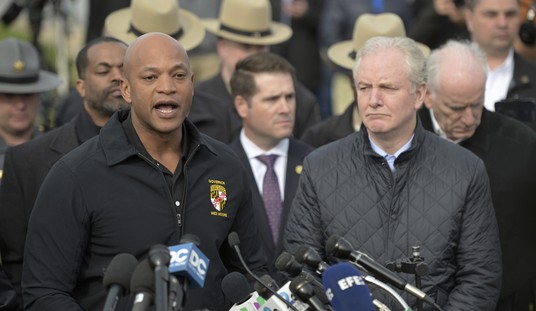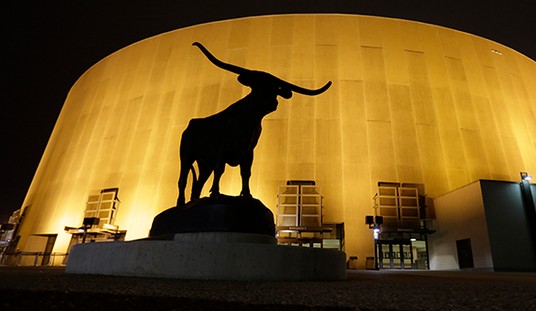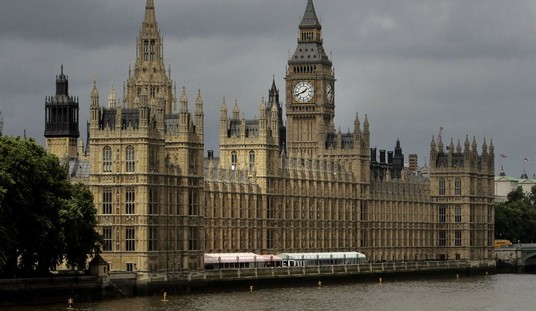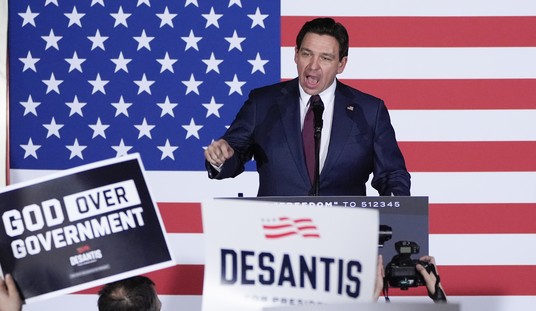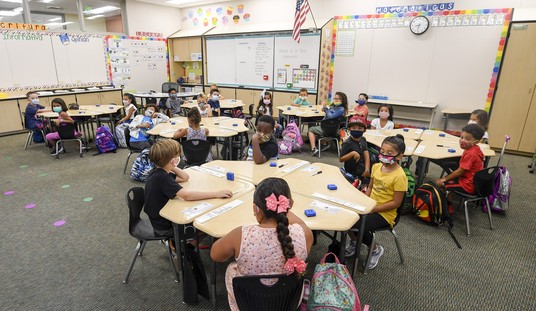Possible, sure, but color me still somewhat unconvinced even after a compelling analysis from FiveThirtyEight’s Nathaniel Rakich. Donald Trump dismantled the “blue wall” in 2016, winning the previously unwinnable Wisconsin, Michigan, and Pennsylvania — even if just by a whisker in all three. Rakich points out that Trump came closer than any Republican in decades four years ago in flipping Minnesota, and that the state has gotten more Republican at the same time:
Minnesota is much more evenly divided than that record suggests: For example, it came within a couple percentage points of voting for now-President Trump in 2016. And as Michigan, Pennsylvania and Wisconsin — which voted Democratic in every presidential election from 1992 to 2012 — showed in 2016, streaks are meant to be broken.
Most ominously for Democrats, there is evidence that Minnesota is becoming redder over time, with 2016 being a particular inflection point. In 1984, the state was 18.2 points more Democratic than the nation as a whole. But in 2016, for the first time since 1952, Minnesota voted more Republican than the rest of the U.S. …
But in recent elections, Democrats’ pro-environment and anti-gun positions have alienated these voters in places like the Iron Range, an ancestrally Democratic mining region, and in 2016 Trump was able to tap into their racial and economic grievances as well. Democrats went from carrying Minnesota by 7.7 points in 2012 to carrying it by just 1.5 in 2016. Tellingly, the counties that shifted the most toward Trump were also the counties with the highest concentrations of white people without a college degree.
Nor is Rakich the only one seeing a potential win in Minnesota. Robert Stacy McCain senses change in the wind in the Land of Sky Blue Water, or at the very least sees anxiety in Democrats about those prospects:
How bad do things look for Joe Biden’s campaign right now? Consider this: Democrats are worried about Minnesota, a state no Republican presidential candidate has carried since Richard Nixon’s 1972 landslide. Yet polls show President Trump gaining ground in Minnesota, and Democrats are worried because they haven’t seen any appearances by Biden or his running mate Kamala Harris. “Why aren’t they here?” one Democratic-Farmer-Labor (DFL) Party official told Minnesota Public Radio last week. “We need to hear from them. We need to see their presence on the ground.”
Biden’s peril in Minnesota is in many ways emblematic of everything that’s gone wrong for Democrats in this campaign. While the Real Clear Politics average of Minnesota polls still shows Biden leading Trump by more than five points, a poll by Emerson College earlier this month had Trump within three points, and a poll by the GOP-affiliated Trafalgar Group two weeks ago showed a tie in Minnesota. How could a state that twice gave majorities to Barack Obama, a state that not even Ronald Reagan could win in his 1984 landslide, be in play for Trump this year? Well, in a word, riots. …
At least 13 members of Biden’s campaign staff contributed to the fund that bailed out those criminals, and Biden’s campaign spokesman told Reuters that the Democratic candidate opposes requiring cash bail as a “modern day debtors prison.” By endorsing this “turn-’em-loose” policy for criminals, the Democrats have endangered public safety, especially including the safety of the black community. Apparently, Biden’s campaign believes that such policy stances are necessary to “energize” the black vote, and thus avoid the fate of Hillary Clinton.
What seems to be involved here is a dubious bit of conventional wisdom among Democratic Party strategists who, in the wake of Trump’s 2016 victory, looked at exit polls and other data and reached the conclusion that Clinton lost because of low turnout among African-American voters. Therefore, Democrats apparently concluded, what they needed to do was to foment a sense of crisis in the black community, with Joe Biden riding in as the hero to rescue them from the racist menace of Trump. This cynical calculation explains why Democrats and their media allies turned Floyd’s death in Minneapolis into an international cause célèbre, the occasion for endless lectures about the evils of “systemic racism,” etc.
Without going into an in-depth critique of this Democratic strategy (except to say that Hillary’s unpopularity transcended racial lines), the important point to make is that a belief in the need to “energize” black voters explains why Biden’s campaign overlooked the potential for a backlash against the hateful rhetoric and criminal violence of the #BlackLivesMatter movement. It is this backlash that has made it increasingly possible that Trump can win Minnesota.
Neither of these men are necessarily wrong, and McCain’s observation about the Biden campaign’s footsie-playing with anarchists is likely very astute. The riots have changed the calculus, and in more ways than McCain cites, too. For one thing, the city’s damaged infrastructure is almost certain to lead to voter-turnout issues in the Twin Cities, along with a general unease about being out in public. (The city of Minneapolis helpfully warned people to avoid public places, and also to allow themselves to be victimized to prevent worse things from happening.) If the DFL can’t get a big turnout in the urban cores, they won’t have a happy night on Election Day, even if mail-in voting succeeds.
However, the fact remains that the close call in 2016 was almost entirely a failure by Hillary Clinton rather than a near-triumph by Donald Trump. Trump only added 2,000 votes to Mitt Romney’s 2012 totals, while Clinton lost over 180,000 Barack Obama votes from four years earlier (and not all of those were African-American either, as McCain correctly observes). The combined Trump/RNC get-out-the-vote effort is much more robust this time around, and Biden’s is non-existent, but even a marginal improvement by the DFL over 2016 would put the state out of reach. They managed to solve their 2016 problem in the midterms when turnout bounced back up, unhindered by Hillary Clinton’s baggage, especially in the suburbs. The GOP picked up two House seats in outstate Minnesota but lost the MN-02 and MN-03 suburbs; Rakich doesn’t include midterm data in his charts, but we can assuredly believe that it wasn’t anywhere near as close as it was two years earlier.
That’s because of yet another reason for skepticism: no Republican has won statewide office since 2006, and no non-incumbent Republican has won since 2002, when both Norm Coleman and Tim Pawlenty managed it. There are many reasons for this failure — party organization, a badly timed purity campaign in 2008 aimed at Coleman among them — but mostly it’s because the Twin Cities have become both larger and more progressive. The Metro area accounts for about half of all voters in the state, and Republicans have done a poor job of penetrating even in the first-ring suburbs, which is why they lost those two seats in 2018.
That’s why McCain’s argument makes more sense than Rakich’s, and why this year might be different. Suburban voters in MN disliked Trump and hated the messaging on immigration and nationalism in both 2016 and 2018. The riots have made those issues very secondary now in the suburbs, and perhaps all the way into the cities themselves. If the violence and destruction had been limited to a couple of weeks in May and June, it would likely be a non-factor in the election. The pillaging of Nicollet Mall last week shows that the DFL and progressives have allowed the situation to remain completely out of control, and that has to weigh heavily on the minds of voters.
I’d still call a Minnesota win a long shot, but … Democrats have good reason to be worried.



